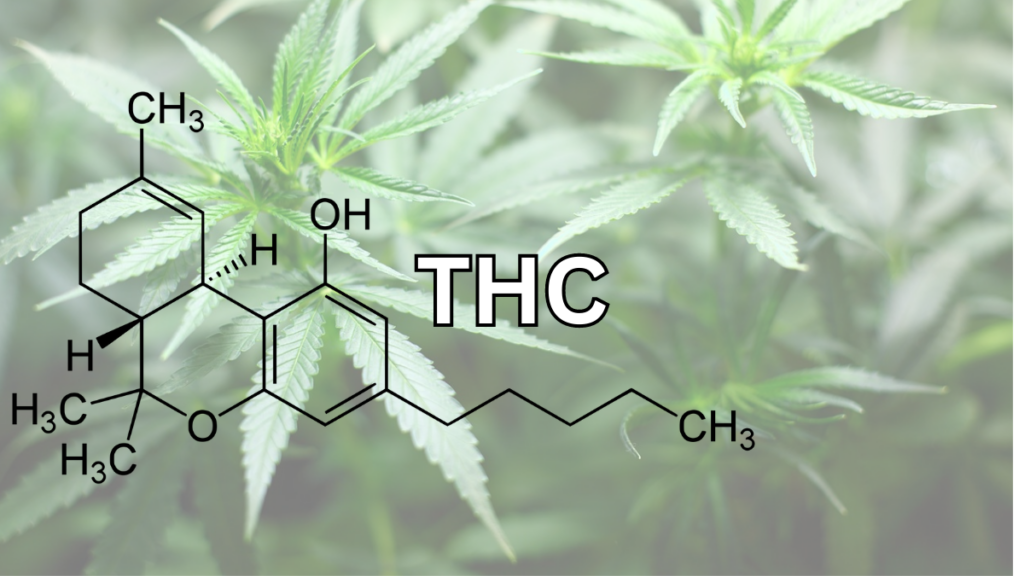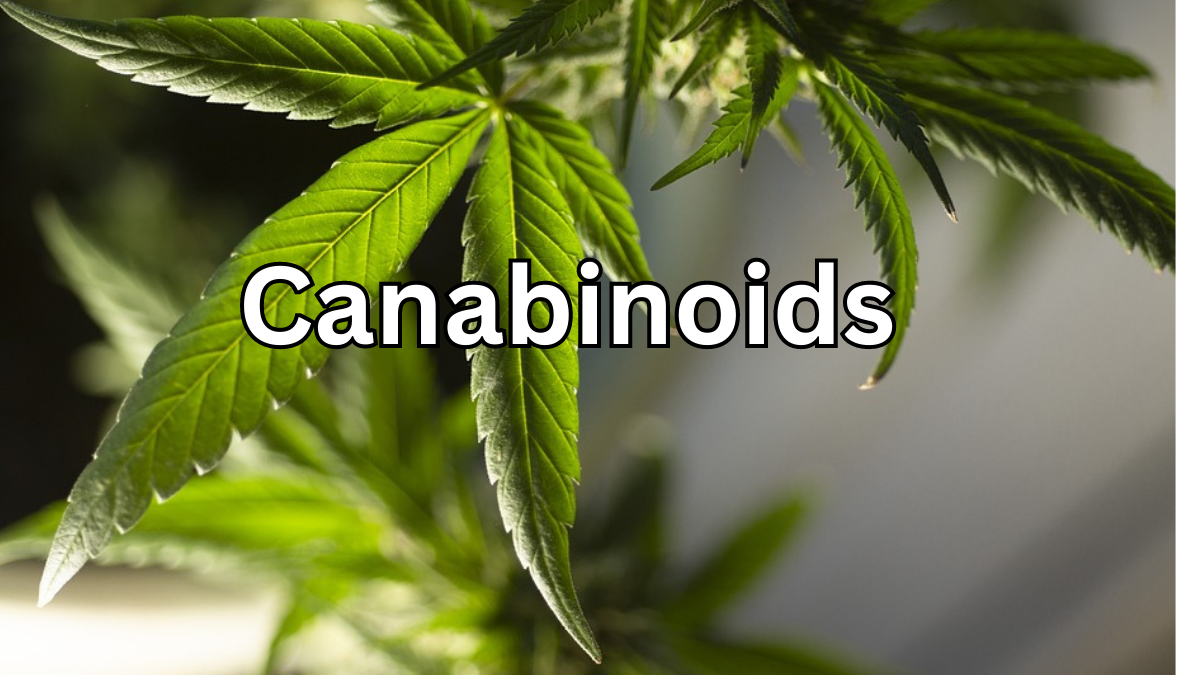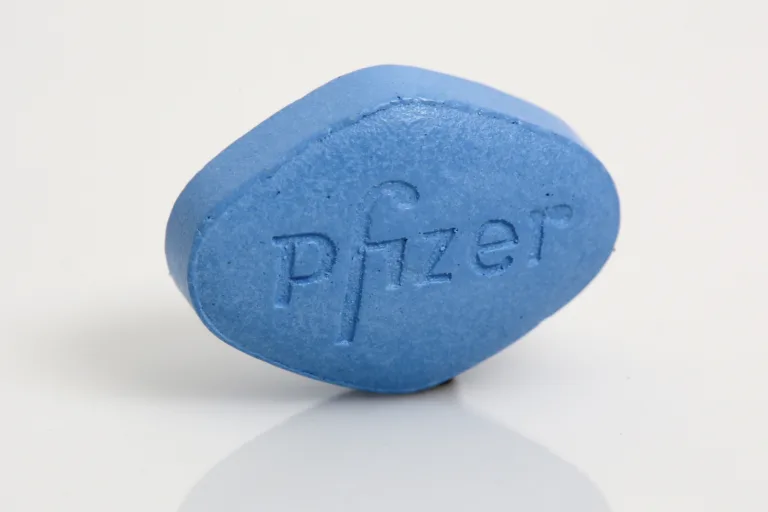Cannabis: The Ultimate Guide to Understanding Cannabinoids: THC, Delta 8, Delta 9, CBD, HHC, CBN & CBG
Introduction to Cannabis
The Basics of Cannabinoids and their Effects on the Body
Cannabinoids are chemical compounds found in the cannabis plant, which include both psychoactive and non-psychoactive compounds. These compounds are known for their ability to interact with cannabinoid receptors found throughout the human body, including the brain, immune system, and nervous system. There are over 100 different cannabinoids that have been identified in cannabis so far.
When consumed or ingested, cannabinoids can produce a range of effects on the body depending on their chemical makeup. Some cannabinoids can cause feelings of euphoria or altered perception, while others may have anti-inflammatory or pain-relieving properties.
Brief Overview of Different Types of Cannabinoids
There are several types of cannabinoids found in cannabis that each have unique properties and effects on the body. The most well-known cannabinoids include THC (Delta 9 Tetrahydrocannabinol), CBD (Cannabidiol), Delta 8 Tetrahydrocannabinol, CBN (Cannabinol), CBG (Cannabigerol), and HHC (Hexahydrocannabinols).
THC is perhaps the most well-known cannabinoid due to its psychoactive properties. This compound is responsible for producing feelings of euphoria or “high” associated with marijuana use.
CBD is another well-known cannabinoid that does not produce psychoactive effects but has been shown to have potential medical benefits such as reducing inflammation or anxiety. Delta 8 THC is similar to Delta 9 THC but less potent in its psychoactivity and has potential medical benefits like improved appetite and lessened nausea.
CBN is known for its sedative effect which makes it ideal for use as a sleep aid. CBG appears to be effective against glaucoma when applied through eye drops.
Understanding different types of cannabinoids can help you make informed decisions about cannabis usage based on your individual needs and preferences. In the following sections, we will explore each of these cannabinoids in more detail, including their chemical structures, effects on the body, potential medical uses, and drawbacks.
THC (Delta 9 Tetrahydrocannabinol)

The Definition and Chemical Structure of THC
THC is short for delta-9-tetrahydrocannabinol, which is the primary psychoactive component in cannabis. It is a cannabinoid that interacts with the body’s endocannabinoid system by binding to CB1 receptors in the brain and nervous system. THC has a complex chemical structure, consisting of a cyclic ring with side chains that give it its unique properties.
The molecular formula for THC is C21H30O2, and its molecular weight is 314.46 g/mol. It exists as a crystalline solid at room temperature, but it can be extracted from cannabis plants using solvents like ethanol or CO2.
The Effects of THC on the Body
When consumed, THC binds to CB1 receptors in the brain and nervous system, leading to various effects on the body. The most well-known effect of THC is its psychoactive properties, which can produce feelings of euphoria and altered sensory perception.
Other effects include increased appetite (also known as “the munchies”), relaxation, altered perception of time, impaired coordination, and dry mouth. These effects are dose-dependent and can vary depending on how much THC is consumed. In some rare cases over consumption and abuse can lead to cannabis dependence.
The Medical Uses of THC and Potential Drawbacks
THC has been used medically for several conditions such as chronic pain relief; muscle spasticity caused by multiple sclerosis; nausea and vomiting associated with chemotherapy; appetite stimulation in patients with HIV/AIDS; glaucoma relief by reducing intraocular pressure; anxiety disorders such as post-traumatic stress disorder (PTSD) or obsessive-compulsive disorder (OCD); reducing symptoms associated with Tourette Syndrome; seizures reduction related to epilepsy disorders among others. However, there are also potential drawbacks associated with using THC medically or recreationally. For example, it can impair attention and memory, reduce motivation and productivity, and cause anxiety or paranoia in some individuals. Cannabis-induced psychosis will be covered in another aritcle.
Additionally, it is illegal in many states and countries, which means that using it could result in legal consequences. Overall, THC is a complex cannabinoid with various effects on the body.
While it has medical potential for treating certain conditions, its psychoactive properties should be taken into consideration when deciding whether to use it for medical or recreational purposes. It’s essential to follow the recommended dosage guidelines provided by your physician or healthcare provider when using THC medicinally as an overdose may cause undesirable side effects.
The Rise of Delta 8 Tetrahydrocannabinol
Delta 8 Tetrahydrocannabinol (Delta 8 THC) is a naturally occurring minor cannabinoid found in small concentrations in the cannabis plant. It is chemically similar to Delta 9 THC, which is the main psychoactive compound in marijuana.
However, Delta 8 THC has a slightly different atomic structure with a double bond on the eighth carbon instead of the ninth. Despite this small difference, it creates significant differences in their effects on the body.
Delta 8 THC is still not as well-studied as its more famous counterpart, but early research suggests that it may have some distinct potential therapeutic benefits. Unlike Delta 9 THC, Delta 8 THC produces less anxiety and paranoia in users while still providing pain relief and other benefits.
Chemical Structure: How it Differs from Delta-9 THC?
The chemical structure of Delta 8 may look quite similar to that of delta-9, but it differs by one crucial bond arrangement. The “high” feeling from delta-9 comes from its molecular bond arrangement as it binds strongly to CB1 receptors in our brain’s central nervous system.
Meanwhile, the lower psychotropic effect experienced with delta-8 comes from its structure binding differently and less strongly to these receptors than delta-9. This slight difference explains why both compounds share some properties but differ significantly regarding their intensity and duration of effects.
Differences between Delta-8 and Delta-9 THC
One significant difference between those two cannabinoids lies within their legal status within certain states globally. While most states are yet to clarify their stance on these particular cannabinoids fully—many reports show that delta-8 falls under legal grey areas for many states due to its being extracted rather than synthesized like other cannabinoids like marijuana or hemp plants’ CBD oils.
Another notable distinction is that delta-8 THC has less impact on cognitive and psychomotor abilities than delta-9. This characteristic could make delta-8 a safer alternative for people who want to manage their pain, anxiety, or other conditions without the psychoactive downside.
Potential Medical Benefits of Delta 8 THC
Delta 8 THC’s benefits are still under investigation by researchers. However, some early studies suggest that it may have similar therapeutic effects as Delta 9 THC but with fewer side effects.
Some of the potential medical benefits of Delta 8 THC may include: Pain Relief: Delta 8 THC binds to CB1 receptors in the body, which can help alleviate pain.
Anxiety Relief: Unlike Delta 9 THC, which can cause anxiety and paranoia in some users, Delta 8 THC has shown anxiolytic properties in preclinical research studies. Appetite Stimulation: Early research suggests that Delta 8 THC may increase appetite by stimulating the release of ghrelin hormone.
While more research is needed to fully understand its therapeutic potential and any possible negative side effects, early studies suggest that delta-8-thc may hold significant promise as a natural remedy for various disorders. With promising results so far regarding its benefits coupled with its non-psychoactive nature makes it a great option for those seeking wellness remedies without getting “high.”
CBD (Cannabidiol)
Definition and chemical structure
CBD, short for Cannabidiol, is a non-psychoactive compound found in the cannabis plant. Unlike THC, it does not produce a high or alter the user’s state of mind.
CBD has a complex chemical structure which is made up of 21 carbon atoms, 30 hydrogen atoms and 2 oxygen atoms. CBD belongs to a class of compounds known as cannabinoids.
Its molecular structure is similar to that of THC but with one important difference: the arrangement of its atoms means that it does not have psychoactive effects. This means that users can enjoy the therapeutic benefits without experiencing any intoxication.
Non-intoxicating effects on the body
CBD has been shown to have several non-intoxicating effects on the body. These include anti-inflammatory properties, analgesic effects, and anti-anxiety activity. It’s believed that CBD works by interacting with receptors in our bodies such as serotonin and vanilloid receptors.
One of the most appealing aspects of CBD is that it doesn’t produce unwanted side effects like traditional pharmaceutical drugs often do. It’s also considered safe for human consumption even in large doses because it doesn’t cause any toxic reactions.
Medical uses, including pain relief, anxiety reduction, and epilepsy treatment
CBD has become increasingly popular due to its potential for treating various medical conditions such as chronic pain, anxiety disorders and epilepsy. Studies suggest that CBD can be effective in reducing pain symptoms associated with conditions such as multiple sclerosis and arthritis.
It may achieve this by interacting with neurotransmitters involved in pain signaling pathways. Additionally, CBD may help alleviate anxiety symptoms by promoting relaxation while reducing feelings of stress and fear.
It’s believed to work through modulation of GABA neurotransmitter which helps calm down an overactive brain resulting from anxiety. CBD has been found to be a promising treatment for epilepsy.
In 2018, the FDA approved Epidolex – a CBD-based drug that is used to treat two rare forms of childhood epilepsy. CBD appears to reduce seizures by interacting with receptors in the brain’s endocannabinoid system.
Nonetheless, further larger-scale studies are needed before it can be recommended for general use. CBD is a non-psychoactive cannabinoid that offers several therapeutic benefits without producing any notable side effects.
Its popularity has grown in recent years due to its potential efficacy in treating various medical conditions such as pain, anxiety and epilepsy. While it is still being investigated on how best to use it and what its optimal dosages are, there is no doubt that CBD represents an exciting new frontier in medicine and health care.
HHC (Hexahydrocannabinols)
Definition and Chemical Structure
Hexahydrocannabinols (HHCs) are a class of cannabinoids that share structural similarities with delta-9-tetrahydrocannabinol (THC), the most well-known cannabinoid found in cannabis. HHCs are formed when the double bond in THC’s molecular structure is hydrogenated, resulting in a more stable compound. This process reduces the potency of HHCs compared to THC but still allows for psychoactive effects.
The molecular formula for HHC is C21H32O2, and its chemical name is 1-[(1R,3S)-3-hydroxycyclohexyl]-7-methyl-6-(4-methoxyphenyl)-4,5,6,7-tetrahydro-1-benzothiophene-2-carboxylic acid. HHC can be synthesized from THC or extracted from cannabis plants that naturally produce it. More on HHC here.
Similarities to THC in terms of Psychoactive Effects
Like THC, HHC binds to cannabinoid receptors in the brain and body to produce psychoactive effects. However, because HHC is less potent than THC due to its hydrogenated molecular structure, it produces milder effects overall.
Users report feeling relaxed and euphoric after consuming HHC without experiencing as much anxiety or paranoia as they might with high doses of THC. Additionally, because HHC does not have as strong a binding affinity for CB1 receptors as THC does, it may not produce some of the negative side effects associated with high doses of THC such as impaired memory or motor function.
Potential Medical Benefits
Research on the potential medical benefits of HHC is limited but promising. One study found that mice treated with HCC showed reduced inflammation in their brains, indicating that HHC could be useful in treating conditions such as multiple sclerosis and epilepsy. HHC may also have potential as a pain reliever.
Because it binds to the same receptors as THC but is less potent, HHC could offer similar pain relief without the high associated with traditional cannabis use. While more research is needed to fully understand the potential medical benefits of HHC, its similarities to THC and relatively mild effects make it an interesting cannabinoid worth studying further.
CBN (Cannabinol)
CBN or Cannabinol is one of the lesser-known cannabinoids found in cannabis. It is a mildly psychoactive substance that results from the degradation of THC, which means that it does not occur naturally in large quantities in cannabis plants.
When THC is exposed to light and oxygen over time, it breaks down into CBN. Although CBN is only present in trace amounts, it has shown great promise as a therapeutic agent.
Definition and chemical structure
CBN has a similar chemical structure to THC, but with a few key differences. While THC has a double bond on its cyclohexene ring, CBN has two oxygen atoms instead. This change makes CBN less potent than THC but still produces some psychoactive effects.
Effects on the body, including sleep aid properties
One of the most well-known effects of CBN is its ability to induce sleepiness. Studies have shown that CBN can increase total sleep time and reduce wakefulness when compared to placebo treatments. These findings suggest that CBN could be an effective treatment for insomnia or other sleep disorders.
Apart from its sedative properties, CBN also interacts with other receptors in the body responsible for regulating pain and inflammation. Research suggests that it could have anti-inflammatory benefits similar to CBD.
Potential medical benefits
Despite being relatively unknown, CBN’s potential medical benefits are vast. In addition to its sedative properties and anti-inflammatory potential described above, studies have shown that it might aid bone healing by promoting bone growth while slowing down bone resorption processes. As with most cannabinoids, research on specific medical benefits of Cannabinol is still ongoing but preliminary studies show promising results which means there’s still more to learn about this cannabinoid
, Although Cannabinol (CBN) is a minor cannabinoid, it has the potential to deliver significant medical benefits such as sedative properties, anti-inflammatory, and the potential to aid bone regeneration.
CBN also shows great promise in treating sleep disorders, and researchers are continuing to investigate its potential impact on other health conditions. While we still have much to learn about this cannabinoid, its unique properties and therapeutic potential make it an exciting area of research for those interested in the therapeutic benefits of cannabis.
CBG (Cannabigerol)
Definition and Chemical Structure
Cannabigerol (CBG) is one of the lesser-known cannabinoids found in cannabis plants. It is a non-psychoactive compound, meaning it does not produce the “high” associated with THC. CBG is actually considered a precursor to other cannabinoids, as it is converted into THC, CBD, and other compounds as the cannabis plant grows.
The chemical structure of CBG is similar to that of CBD and THC, as it contains a pentyl chain attached to a resorcinol moiety. However, unlike THC and CBD, CBG exists in much lower concentrations than its more well-known counterparts.
Non-Intoxicating Effects on the Body
Despite being a minor cannabinoid in terms of concentration, CBG has been found to have several potential benefits on the body. Unlike THC, which can cause psychoactive effects such as altered perception and impaired coordination, CBG does not produce any intoxicating effects.
Instead, research has shown that CBG may have anti-inflammatory properties and may act as an antibacterial agent. It may also help to reduce intraocular pressure associated with glaucoma and could potentially be effective in treating conditions such as Huntington’s disease.
Potential Medical Benefits
Studies on CBG are still relatively limited compared to those on THC and CBD. However, early research suggests that this cannabinoid could have several potential medical benefits.
One study published in 2015 found that CBG had neuroprotective properties in mice with Huntington’s disease by increasing antioxidant defenses and reducing inflammation in brain cells. Another study published in 2018 found that CBG was effective at reducing inflammation associated with inflammatory bowel disease (IBD).
Additionally, research has shown that CBG may help to stimulate appetite and could be beneficial for those with eating disorders or undergoing chemotherapy. It may also have potential as an analgesic, or pain-reliever, although further research is needed.
Conclusion
While CBG may not be as well-known as THC or CBD, it has shown promise in early studies as a non-intoxicating cannabinoid with potential medical benefits. However, more research is needed to fully understand the effects of CBG on the body and its potential uses in treating various conditions. As interest in cannabinoids continues to grow, it will be important to continue studying lesser-known compounds like CBG to fully understand their therapeutic potential.
Conclusion
It is important to know and understand the different types of cannabinoids that are present in cannabis. While THC remains the most well-known and controversial cannabinoid due to its psychoactive effects, other cannabinoids such as CBD, Delta 8 THC, HHC, CBN and CBG are gaining recognition for their potential medical benefits without the intoxicating effects. Delta 8 THC has shown potential in reducing anxiety and inflammation while also providing pain relief.
It also offers a more smooth and mellow experience compared to Delta 9 THC. CBD has gained popularity for its ability to provide pain relief without any psychoactive properties.
It is also being studied for its potential use in treating epilepsy. HHC is structurally similar to THC but with less intensity in terms of psychoactive effects.
It may have potential as a treatment for glaucoma and may also help increase appetite in patients undergoing chemotherapy. CBN’s sedative properties make it a promising sleep aid while CBG has non-intoxicating effects on the body with potential anti-inflammatory properties.
As research continues into different cannabinoids, we can expect to see more studies that explore their potential medical benefits. While there is still much we do not know about these compounds, they offer new hope for people suffering from various health conditions.
It is important to remember that cannabis products containing these cannabinoids should be used responsibly under medical guidance or legal regulation. By knowing your cannabinoids and understanding their effects on your body, you can make informed decisions about which products are best suited for your needs.


